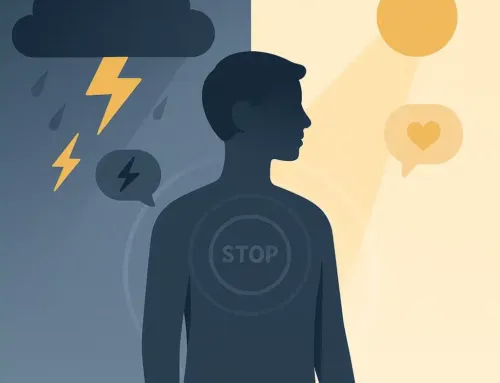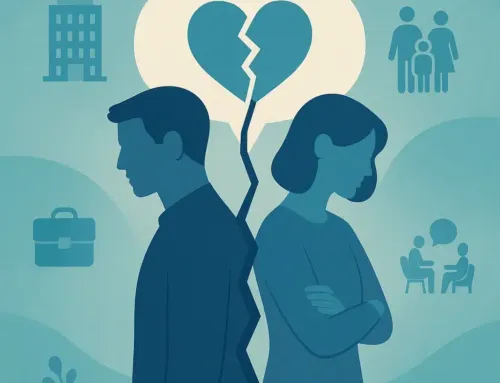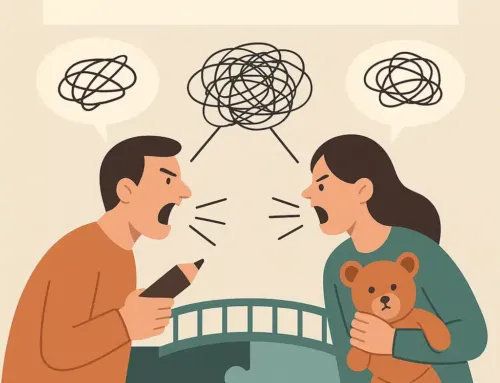
Approx. read time: 7.2 min.
Post: How to Stay Grounded When You’re Triggered: A Guide for Everyday Life
Getting triggered isn’t always loud or dramatic. Sometimes it’s silent and internal—a rush of thoughts, emotions, and physical sensations that flood your system without warning. And the hardest part? When no one around you understands or relates. You’re left trying to hold yourself together while everything inside feels like it’s falling apart.
For people who carry trauma, anxiety, or emotional sensitivity, triggers can happen anywhere—at work, during conversations, in traffic, even scrolling social media. And when they hit, they can hijack your day if you don’t have tools to ground yourself.
This article breaks down practical, no-nonsense ways to stay grounded when you’re triggered. Not from a distant, clinical perspective—but from the place of someone who knows how heavy it can get, and how important it is to have solid, simple ways to bring yourself back.
What Does It Mean to Be Triggered?
Being “triggered” means something—usually a memory, situation, or sensory cue—sets off a strong emotional or physiological response. It might be linked to past trauma, or it might just overwhelm your nervous system.
Triggers can cause:
- Racing thoughts
- Tight chest or shallow breathing
- Feeling frozen or on edge
- Emotional waves like panic, anger, or shame
- Disconnection from your surroundings
You might not always know why something triggered you. And that’s okay. The goal isn’t to avoid being triggered completely—it’s to recognize when it’s happening, and know how to respond in ways that keep you grounded and safe.
Why Grounding Matters
When you’re triggered, your nervous system flips into survival mode—fight, flight, freeze, or fawn. Grounding helps shift you out of that state and back into your body and the present moment. It gives your brain and body a signal: “We’re okay right now.”
Grounding doesn’t erase the pain. But it gives you control when you feel powerless. It helps you ride out the wave without drowning in it.
Here’s how to build a toolbox of grounding strategies that you can actually use in real life.
1. Know Your Triggers
Awareness is your first defense. The more clearly you can name your triggers, the faster you can recognize what’s happening and catch yourself before things spiral.
Ask yourself:
- When do I usually feel overwhelmed?
- Are there certain people, topics, or environments that consistently make me feel unsafe or reactive?
- What does being triggered feel like in my body?
What helps: Keep a note on your phone or in a journal. Each time you notice you’re triggered, write down what happened, how you felt, and what helped (or didn’t). Over time, you’ll see patterns.
This isn’t about blaming yourself—it’s about having clarity. That clarity makes it easier to prepare for the moments that might throw you off balance.
2. Use Your Senses
One of the most effective grounding strategies is sensory grounding. When your mind is racing, focusing on your five senses pulls you back into the now.
The 5-4-3-2-1 Technique:
- 5 things you can see
- 4 things you can touch
- 3 things you can hear
- 2 things you can smell
- 1 thing you can taste
You don’t need to say it out loud. Just slow down, observe, and mentally name things around you. It seems simple, but it works. You shift from “What’s wrong with me?” to “I’m here. I’m in my body. I’m safe.”
Other sensory tricks:
- Hold an ice cube or run cold water over your hands
- Carry a small textured object like a stone or fabric swatch
- Chew strong gum or mint
- Smell essential oils or something familiar and calming
3. Breathe on Purpose
When you’re triggered, your breathing usually speeds up without you noticing. That shallow, fast breathing sends danger signals to your brain and fuels the panic loop.
The fix? Controlled, intentional breathing.
Try this simple rhythm:
- Inhale through your nose for 4 seconds
- Hold for 4 seconds
- Exhale slowly through your mouth for 6 seconds
Do this 4–6 times, or until your body starts to settle. Your heart rate will follow your breath. Your body will believe you when you say, “It’s okay.”
This is something you can do anywhere—at your desk, in a bathroom stall, in your car, during a conversation. It’s invisible but powerful.
4. Create a Go-To Routine
Sometimes your brain is too overwhelmed to think clearly in the moment. That’s why it helps to have a simple, pre-decided grounding routine.
Here’s an example of one:
- Step outside for air
- Drink a full glass of water slowly
- Breathe using the 4-4-6 method
- Repeat the phrase: “This is a feeling. It will pass. I’m safe right now.”
Make it your own. You can include physical movement, writing, or anything that helps you reset. The key is: keep it short, repeatable, and easy to remember under stress.
Write it down and keep it somewhere you’ll see it. When your brain is in panic mode, having a script to follow can save you from spiraling deeper.
5. Move Your Body
Triggers get stored in the body. That energy needs somewhere to go. If you stay frozen or try to “think your way through it,” it often gets worse.
So move.
Even small movement helps.
- Walk around the block
- Shake out your hands and arms
- Stretch your shoulders and neck
- Do a few squats or knee lifts
- Dance it out, stomp your feet—anything that gets your blood moving
Movement discharges stress and gives your nervous system a reset. It doesn’t have to look like a workout. Just shift your body out of freeze mode.
6. Set Boundaries with People
One of the hardest parts about being triggered is the loneliness. Especially when others don’t get it—or worse, when they dismiss or invalidate what you’re going through.
If someone isn’t safe for your nervous system, it’s okay to step back. You’re allowed to protect your peace. You don’t need to justify your triggers or educate people who aren’t willing to meet you with empathy.
You can say:
- “I need a little space right now.”
- “I’m not in the right headspace to talk about this.”
- “Let’s pause this conversation and come back to it later.”
Boundaries aren’t walls. They’re doors you can open and close when you choose. You get to decide who gets access to you when you’re vulnerable.
7. Talk to Someone Safe
Even with all the self-soothing tools, sometimes you just need to be seen. Whether it’s a therapist, a friend, or even a journal—get the storm out of your head.
You don’t have to explain everything perfectly. You don’t have to be “fixed.” Just naming what’s going on can help you feel less alone.
If nothing else, write this to yourself:
“This was hard. But I got through it. I’m learning how to stay grounded, even when it feels impossible.”
Final Thoughts: You’re Not Broken
If you get triggered, it doesn’t mean you’re broken. It means your body and mind are trying to protect you the best way they know how. You’re learning a new way now—one where you don’t have to live in constant reaction mode.
Start small. Practice these grounding tools during low-stress moments so they become familiar. Over time, they’ll become second nature—and you’ll build more resilience than you realize.
Most importantly, be kind to yourself. This work is slow. It’s not linear. But every time you ground yourself instead of spiraling, you’re rewriting the story. You’re building safety within yourself. And that’s a powerful thing.
Related Videos:
Related Posts:
The Ugly in Me: How Triggers Shape the Versions of Ourselves We’d Rather Not See
Why You React in the Moment—And How to Heal Your Heart Before It Breaks
One Step in the World, One Step in the Spiritual World: The Art of Living in Two Realities
The Silent Burden: Untreated Generational Trauma and Its Impact on Mental and Physical Health
From Dust to Life: The Convergence of Biblical Creation and Modern Science









